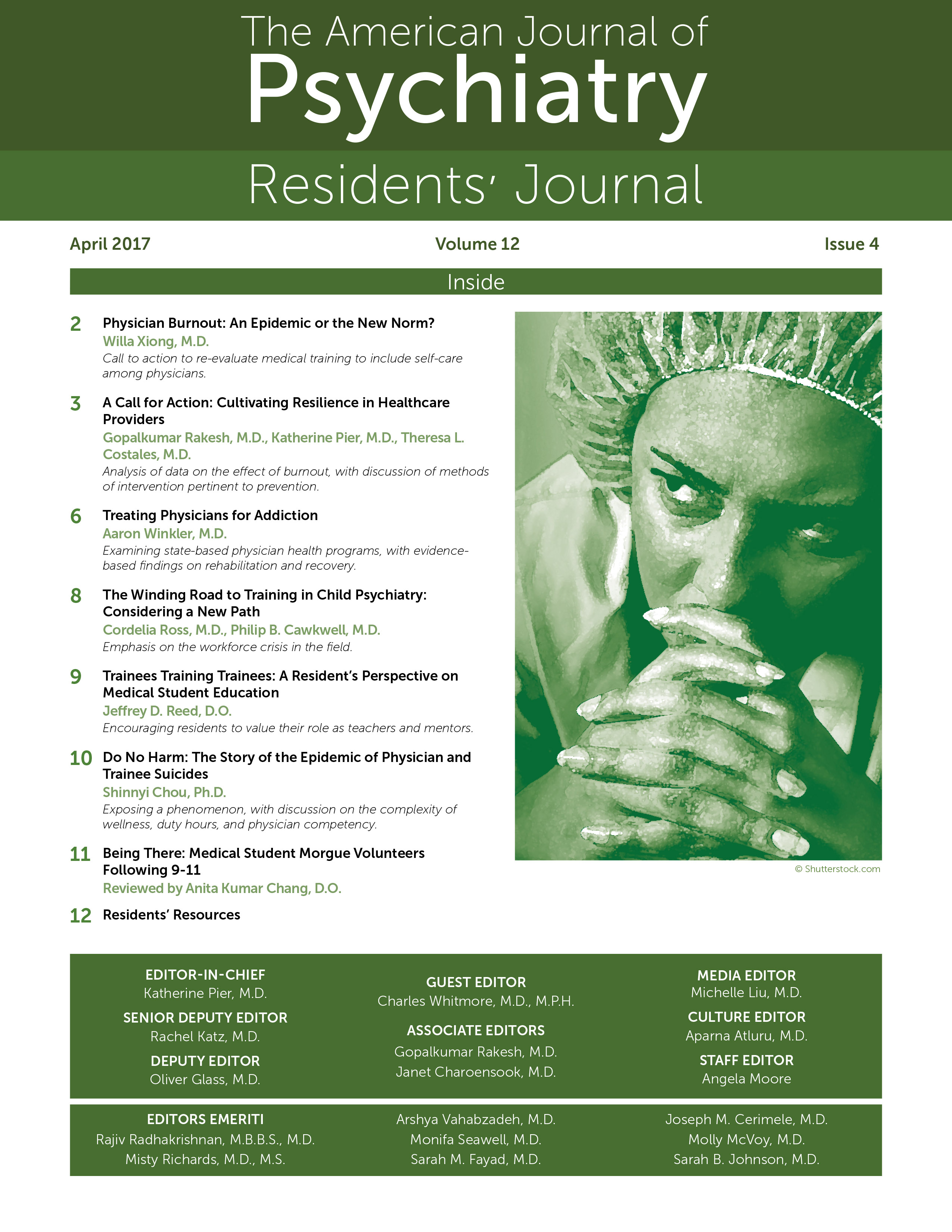Physician Burnout: An Epidemic or the New Norm?
“If your compassion does not include yourself, it is incomplete.”
Physicians often suffer significant burnout, with an alarming 54% reporting it in a national survey (1). This is an experience familiar to those across all levels of training, including medical students, half of whom also reported burnout (2). After spending nearly a decade in education and accruing financial debts, physicians wade forth into long hours, high-stakes decisions, sleep deprivation, work-life balancing acts, paperwork, medicolegal risks, administrative burden, and reimbursement issues. The satisfaction from being able to interact meaningfully with patients and contribute to the well-being of another is irrefutable; however, the cumulative effects of the aforementioned forces weigh heavily on the other end of the scale.
Burnout is referred to as a syndrome of emotional exhaustion, depersonalization, and a low sense of personal accomplishment. Like depression, burnout has its own validated measure, the Maslach Burnout Inventory. One of the inventory’s researchers referred to burnout as “an erosion of the soul caused by a deterioration of one’s values, dignity, spirit and will” (3). The diagnostic criteria and quantifiability of burnout may be argued, but the implications are clear. These include decreased quality of care, poor patient satisfaction, medical errors, and physician turnover. Burnout is also linked to personal repercussions for physicians, including relationship difficulties, substance use, and suicidal ideations (4). These consequences are resoundingly similar to the well-known increase in divorce rates, mental health disorders, and deaths by suicide in physicians.
There is a surprising paucity of evidence on how to address a problem afflicting one of every two physicians. The traditional approach is to treat the symptoms post-burnout. Apart from some programs that have incorporated mindfulness (5), interventions are lacking. This may reflect insufficient attention to burnout as a public health problem, lack of proposed prevention mechanisms, limited implementation of interventions, or a combination of the three. One hindrance to change is that the same qualities responsible for the success of physicians simultaneously make them vulnerable to burnout. Embedded into early medical education are two fundamental principles: “The patient always comes first” and “Never show weakness.” With these principles, the expectations of training and practice become a double-edged sword. Service extends into personal sacrifice and ultimate deprivation. Compassion crosses the line into either emotional depletion or emotional suppression in the hopes of preserving oneself. Furthermore, the inherent drive to “cure” and “fix” leads to a sense of perpetual inadequacy in the face of ambiguity.
Burnout is transitioning from being a pervasive epidemic to the new norm, albeit one that we should not readily accept; it is the byproduct of a system that hones physicians’ abilities to work until they can work no longer, and then to work some more. System-level interventions may provide some mitigation, but perhaps we need to go back to the drawing board, and re-evaluate medical training. It is time to uphold the Hippocratic Oath and its principles of beneficence and non-maleficence not only in the care of patients, but also for ourselves.
1. : Changes in burnout and satisfaction with work-life balance in physicians and the general US working population between 2011 and 2014. Mayo Clin Proc 2015; 90:1600–1613 Crossref, Google Scholar
2. : Relationship between burnout and professional conduct and attitudes among US medical students. JAMA 2010; 304:1173–1180 Crossref, Google Scholar
3. Maslach Burnout Inventory Manual, 3rd ed. Palo Alto, Calif, Consulting Psychologists Press, 1996 Google Scholar
4. : Relationship between burnout and professional conduct and attitudes among US medical students. JAMA 2010; 304:1173–1180 Crossref, Google Scholar
5. : Association of an educational program in mindful communication with burnout, empathy, and attitudes among primary care physicians. JAMA 2009; 302:1284–1293 Crossref, Google Scholar



